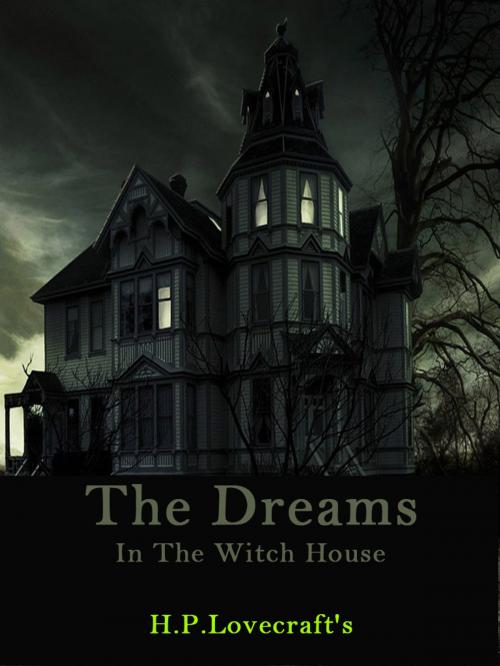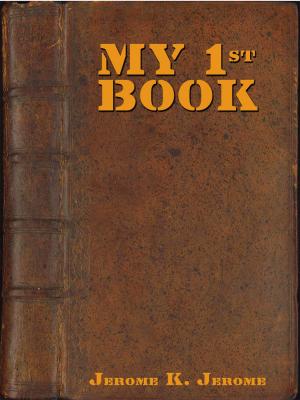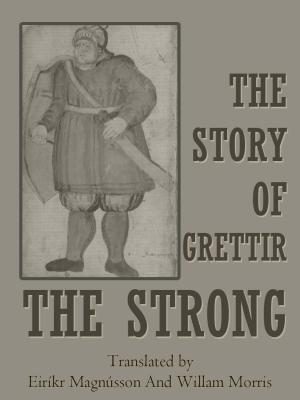The Dreams In The Witch House
Fiction & Literature, Horror, Science Fiction & Fantasy, Short Stories| Author: | H. P. Lovecraft | ISBN: | 1230000230447 |
| Publisher: | AppsPublisher | Publication: | April 3, 2014 |
| Imprint: | Language: | English |
| Author: | H. P. Lovecraft |
| ISBN: | 1230000230447 |
| Publisher: | AppsPublisher |
| Publication: | April 3, 2014 |
| Imprint: | |
| Language: | English |
The Dreams In The Witch House
by H. P. Lovecraft
"The Dreams in the Witch House" is a short story by H. P. Lovecraft, part of the Cthulhu Mythos genre of horror fiction.
Walter Gilman, a student of mathematics and folklore at Miskatonic University, takes a room in the Witch House, a house in Arkham thought to be accursed. The first part of the story is an account of the history of the house, which has once harboured Keziah Mason, an accused witch who disappeared mysteriously from a Salem jail in 1692. Gilman discovers that for the better part of two centuries many if not most of its occupants have died prematurely.
The dimensions of Gilman's room in the house are unusual, and seem to conform to a kind of unearthly geometry that Gilman theorizes can enable travel from one plane or dimension to another. In his dreams Gilman is taken to a city of Lovecraft's "Elder Things", and even brings back tangible evidence that he's actually been there. Several times his dreaming self encounters a bizarre "congeries of iridescent, prolately spheroidal bubbles", as well as a trapezoidal figure, both of which seem sapient. It is hinted that these may be the extra-dimensional forms of Keziah and her familiar. The landlord then abandons the house completely, and when it is finally demolished years later, a space between the walls is found filled with children's bones, a sacrificial knife, and a bowl made of some metal that scientists are unable to identify. A strange stone statuette of a star-headed "Elder Thing" is also found, and these items go on display in the Miskatonic University museum, where they continue to mystify scholars.
About The Author :-
Lovecraft's major inspiration and invention was cosmic horror, the idea that life is incomprehensible to human minds and that the inverse is fundamentally alien.
Lovecraft's readership was limited during his life, but his reputation since then has grown in leaps, and he is now regarded as one of the most influential horror writers of the 20th century.
HOWARD PHILLIPS LOVECRAFT was born in 1890 in Providence, Rhode Island, where he lived most of his life. He wrote many essays and poems early in his career, but gradually focused on the writing of horror stories, after the advent in 1923 of the pulp magazine Weird Tales, to which he contributed most of his fiction.
Howard Phillips Lovecraft died in March 1937, at the height of his career. Though only forty-six years of age, he had built up an international reputation by the artistry and impeccable literary craftsmanship of his weird tales; and he was regarded on both sides of the Atlantic as probably the greatest contemporary master of weird fiction.
The Dreams In The Witch House
by H. P. Lovecraft
"The Dreams in the Witch House" is a short story by H. P. Lovecraft, part of the Cthulhu Mythos genre of horror fiction.
Walter Gilman, a student of mathematics and folklore at Miskatonic University, takes a room in the Witch House, a house in Arkham thought to be accursed. The first part of the story is an account of the history of the house, which has once harboured Keziah Mason, an accused witch who disappeared mysteriously from a Salem jail in 1692. Gilman discovers that for the better part of two centuries many if not most of its occupants have died prematurely.
The dimensions of Gilman's room in the house are unusual, and seem to conform to a kind of unearthly geometry that Gilman theorizes can enable travel from one plane or dimension to another. In his dreams Gilman is taken to a city of Lovecraft's "Elder Things", and even brings back tangible evidence that he's actually been there. Several times his dreaming self encounters a bizarre "congeries of iridescent, prolately spheroidal bubbles", as well as a trapezoidal figure, both of which seem sapient. It is hinted that these may be the extra-dimensional forms of Keziah and her familiar. The landlord then abandons the house completely, and when it is finally demolished years later, a space between the walls is found filled with children's bones, a sacrificial knife, and a bowl made of some metal that scientists are unable to identify. A strange stone statuette of a star-headed "Elder Thing" is also found, and these items go on display in the Miskatonic University museum, where they continue to mystify scholars.
About The Author :-
Lovecraft's major inspiration and invention was cosmic horror, the idea that life is incomprehensible to human minds and that the inverse is fundamentally alien.
Lovecraft's readership was limited during his life, but his reputation since then has grown in leaps, and he is now regarded as one of the most influential horror writers of the 20th century.
HOWARD PHILLIPS LOVECRAFT was born in 1890 in Providence, Rhode Island, where he lived most of his life. He wrote many essays and poems early in his career, but gradually focused on the writing of horror stories, after the advent in 1923 of the pulp magazine Weird Tales, to which he contributed most of his fiction.
Howard Phillips Lovecraft died in March 1937, at the height of his career. Though only forty-six years of age, he had built up an international reputation by the artistry and impeccable literary craftsmanship of his weird tales; and he was regarded on both sides of the Atlantic as probably the greatest contemporary master of weird fiction.















